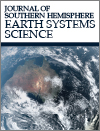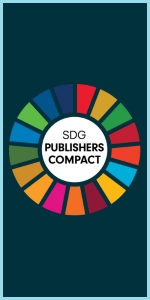Journal of Southern Hemisphere Earth Systems Science
Volume 75
Number 1 2025
This study investigates the sources and impacts of particulate matter smaller than 2.5 μm (PM2.5) resulting from forest fires in Central Kalimantan using an integrated approach. Employing the WRF-HYSPLIT inline model and satellite instruments, such as GEMS, SNPP, MODIS and VIIRS, we aimed to identify PM2.5 sources and understand their spatial distribution.
This study compares over 1 million 1-min near surface air temperature (n = 516,334) and relative humidity (n = 516,717) measurements from two separate, distinct, weather stations at Camden Airport (NSW), Australia. The analysis shows that for most circumstances the measurements at the two stations can be considered equivalent, with mean annual, seasonal and diurnal biases well within the expanded instrument uncertainty. Urban climatologists, modellers and forecasters can use meteorological observations from the NSW air quality networks in their research and operations with confidence.
South-western suburbs of Sydney were affected by 3–4 h of sustained strong westerly winds during the early morning on 31 October 2023 due to a dynamically driven downslope windstorm of moderate strength, which resulted in 425 State Emergency Service (SES) jobs in the aftermath. This paper looks into the observations and computer model outputs during the event to identify the unique mesoscale features seen and analyse the mechanisms that led to the windstorm.
Energy system modelling is a crucial component of planning for the decarbonisation of energy supply. By incorporating meteorological data, such as historical wind speeds across space and time, these models can simulate wind power generation. However, it is essential to quantify the accuracy and confidence of these models to ensure their reliability and effectiveness.
Fire agencies use climate outlook products to assist in seasonal preparedness, but products are not all created in the same way, which can lead to conflicting information on potential risks for the upcoming season. This work compares the foundations of the Bureau of Meteorology’s temperature and rainfall outlooks with the Fire Danger Outlooks. In providing an understanding of product differences, increased literacy and ultimately trust will lead to better application of climate outlook products for operational strategic planning.
We found that the main drivers of projected intensified surface marine heatwaves north-east of New Zealand are changes in the vertical distribution of heat transport and increased stratification, trapping heat near the ocean surface, and heat convergence within the region increasing in parallel with higher greenhouse gas emissions. This explains why the surface and shallow subsurface heating is projected to become more intense, and enables a more nuanced ecosystem vulnerability assessment in relation to marine heatwaves.




